Fossil Butte National Monument
Some of the world's best preserved fossils are found in the flat-topped ridges of southwestern Wyoming's cold sagebrush desert. Fossilized fishes, insects, plants, reptiles, birds, and mammals are exceptional for their abundance, variety, and detail of preservation. Most remarkable is the story they tell of ancient life in the warm, wet environment in and around a freshwater lake.
By car: Travel 9 miles west of Kemmerer, Wyoming on U.S. Highway 30. There is a highway sign near mile post 44; turn right onto Lincoln County Road 300. The Historic Quarry Trail is approximately 1/2 mile on the right. Continue west on County Road 300 for approximately 1.5 miles to Chicken Creek Road which provides access to the visitor center, scenic drive, Nature Trail and picnic area. Closest airports: Rock Springs, Wyoming (130 miles); Salt Lake City, Utah (150 miles).
- Auto and ATV
- Scenic Driving
- Hiking
- Junior Ranger Program
- Wildlife Watching
- Museum Exhibits
- Shopping
- Bookstore and Park Store
- Schools and Education
- Fossils and Paleontology
- Geology
Fossils on the Ridge
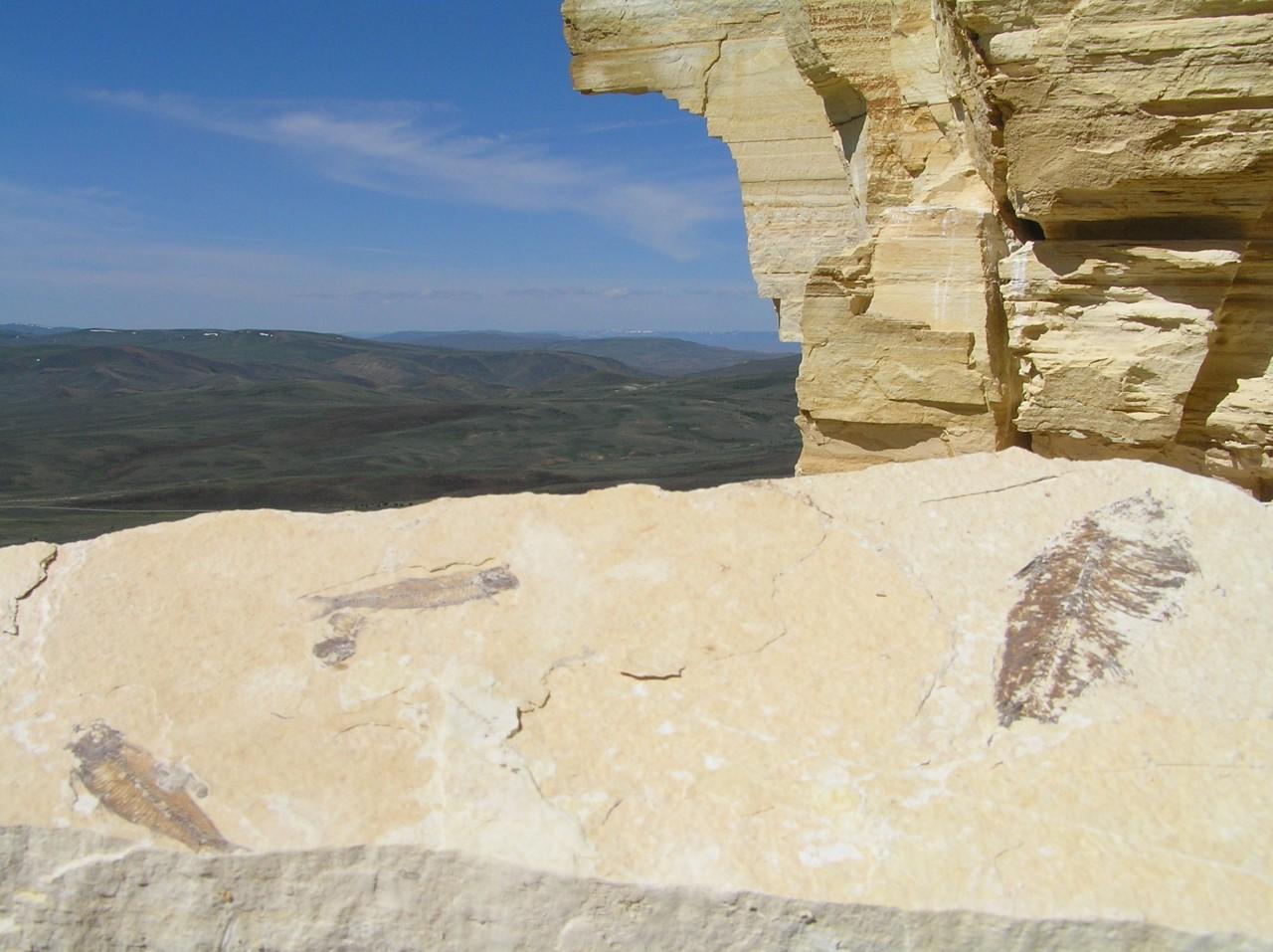
Knightia eocaena, the most abundant vertebrate fossil in the world, lies exposed near cliff face.
Cockerellites liops, a Common Fossil Fish
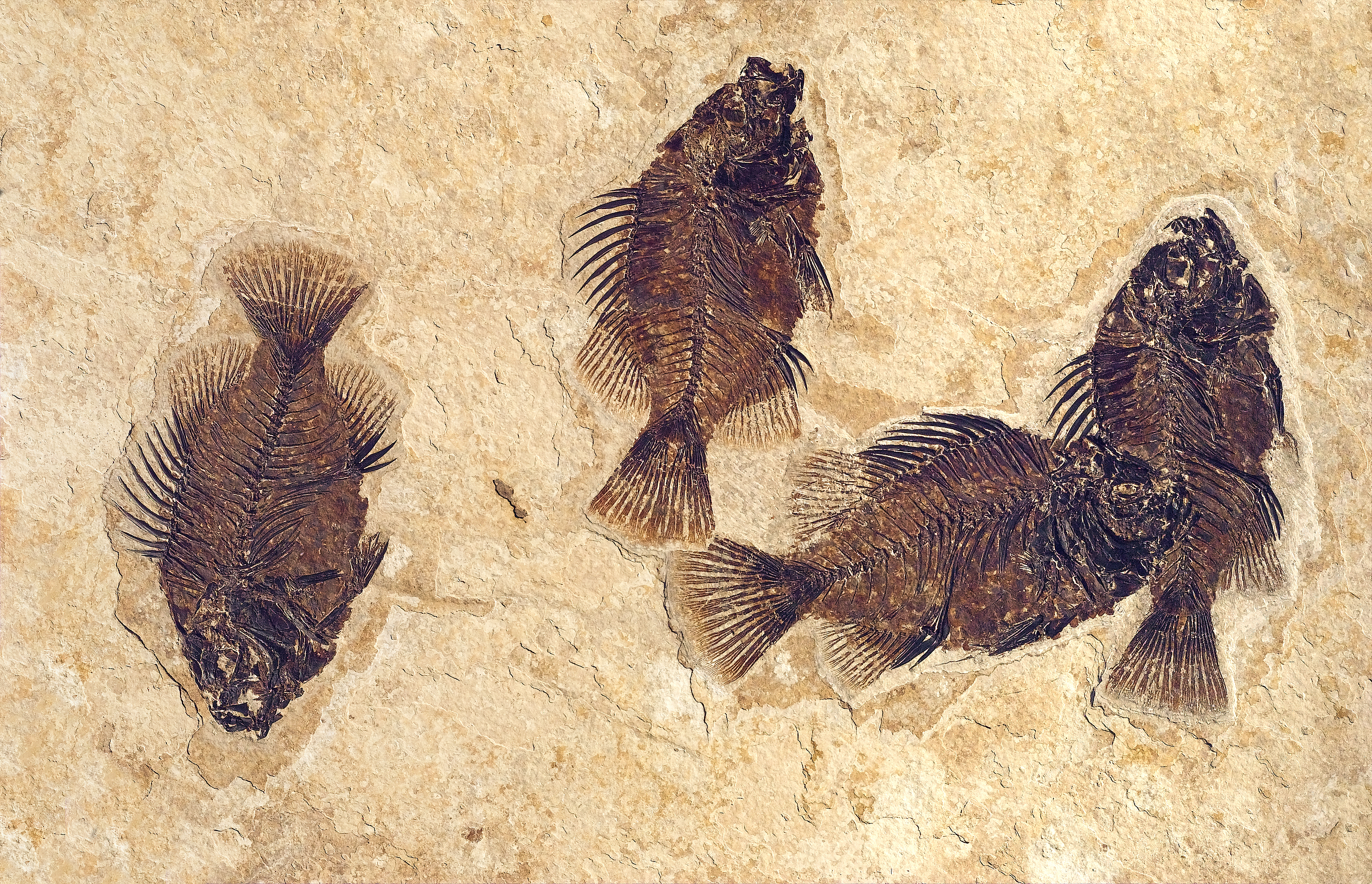
Fossils from the Green River Formation are known for their excellent preservation, abundance, and diversity. Cockerellites liops is one of the common fishes found here.
Palm Frond
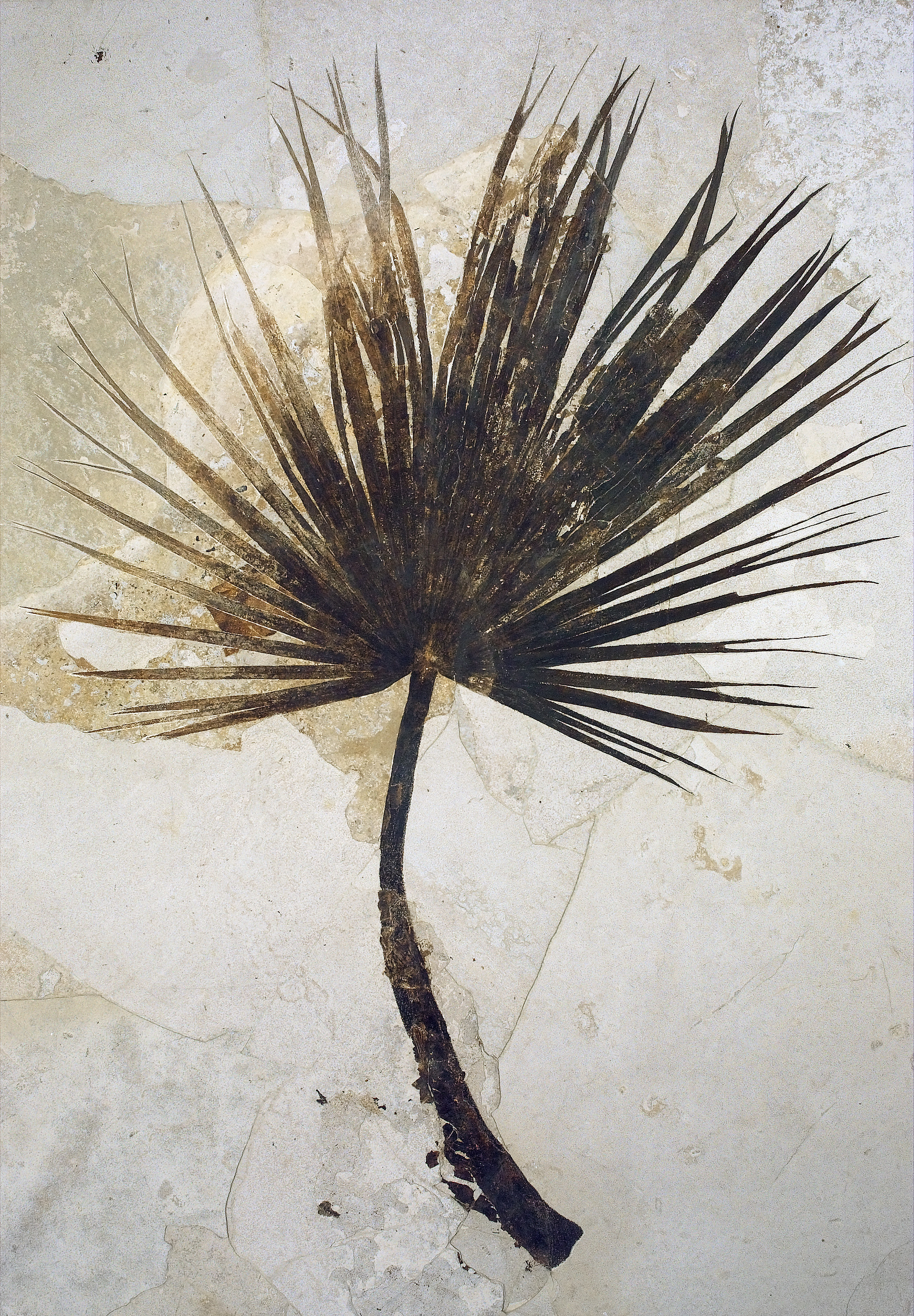
Fossil palm fronds and other plants indicate a climate similar to the Gulf Coast states.
The Limestone Ridges, Remnants of Ancient Fossil Lake, Contrast the Green, Early Summer Landscape.
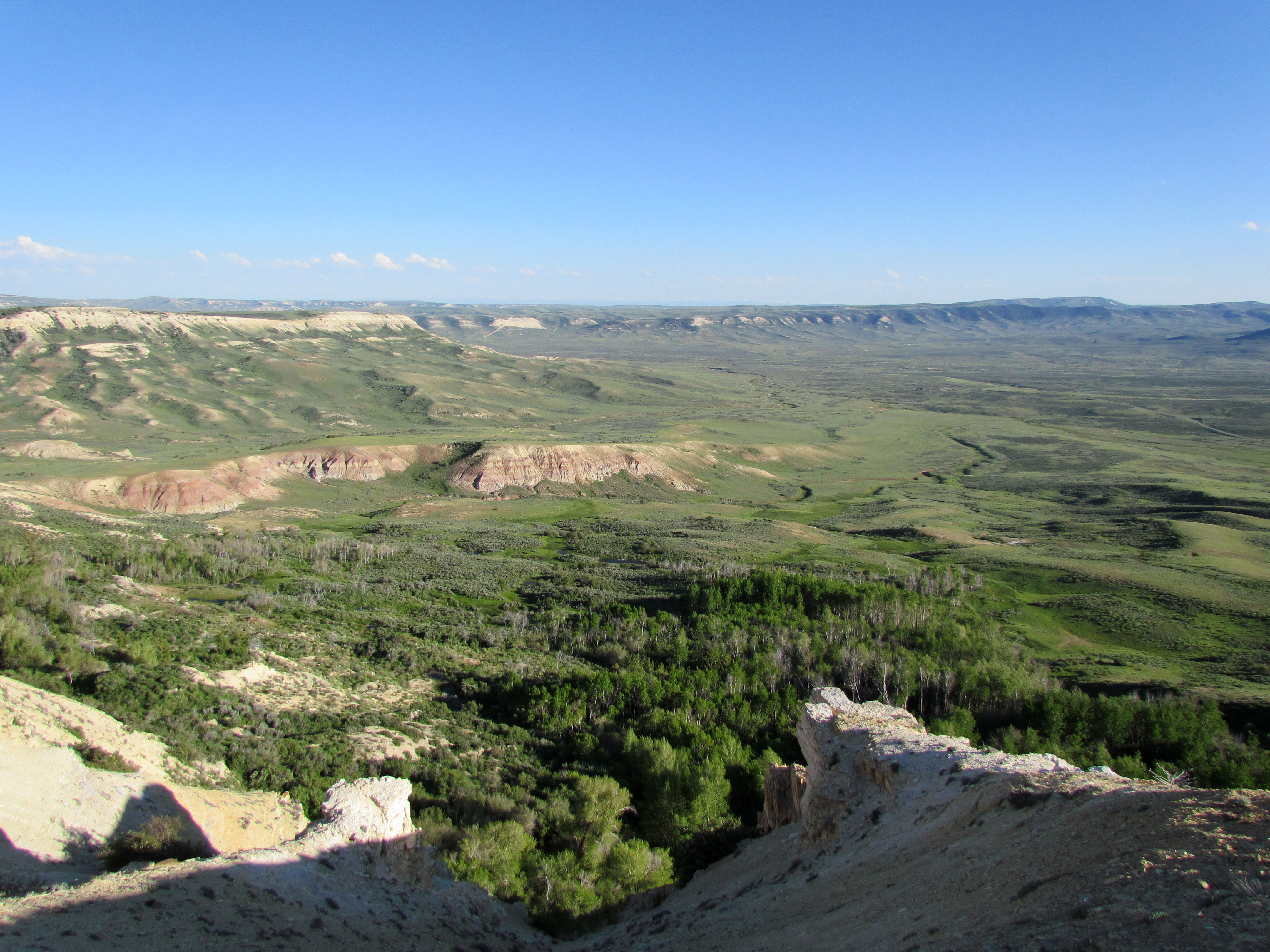
Early Summer Beauty in the High Desert of Southwestern Wyoming
Visitor Center
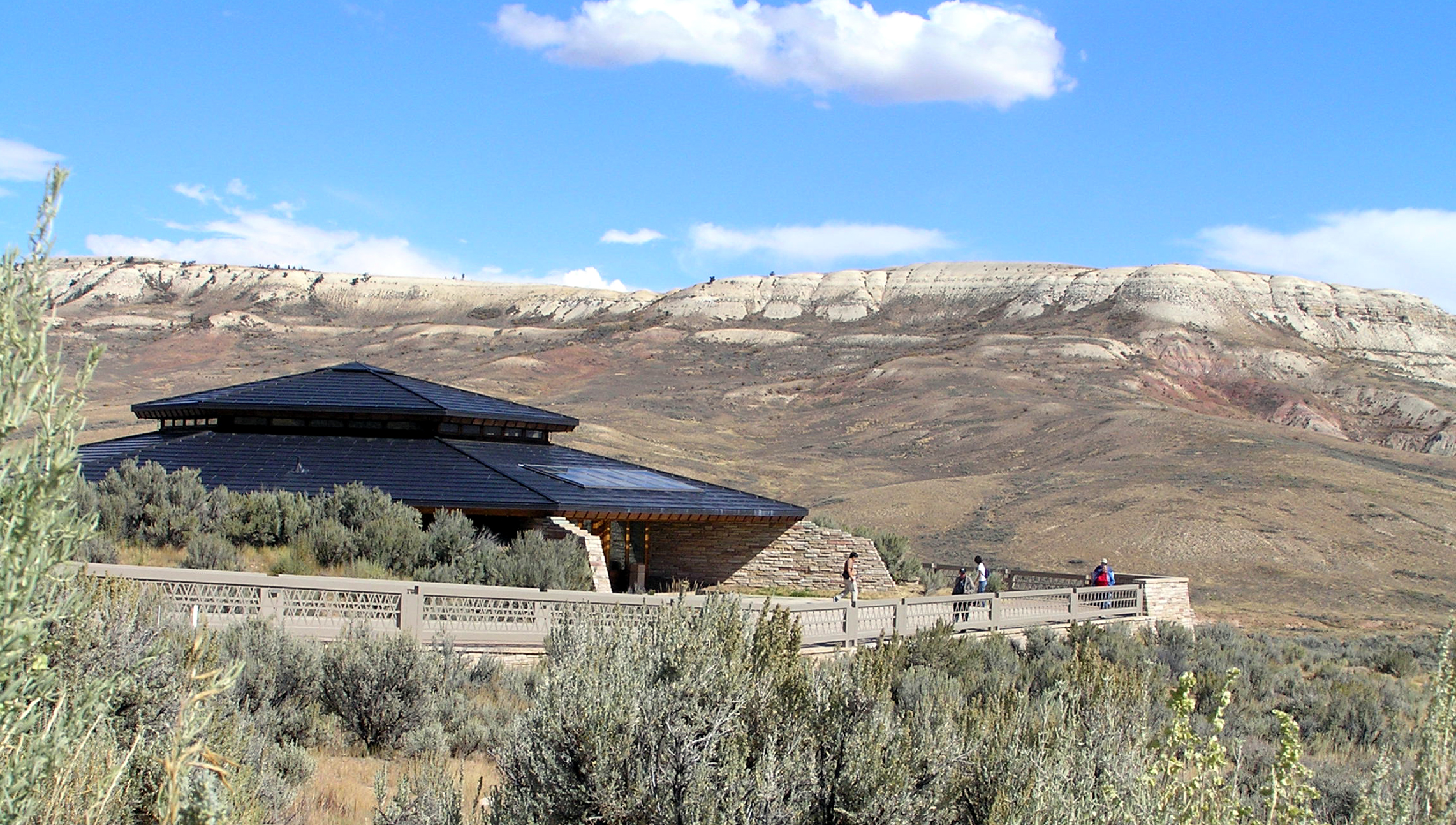
The visitor center is nestled in a sagebrush landscape beneath Fossil Butte. Over 300 fossils are on exhibit.
Moonrise Over Fossil Butte
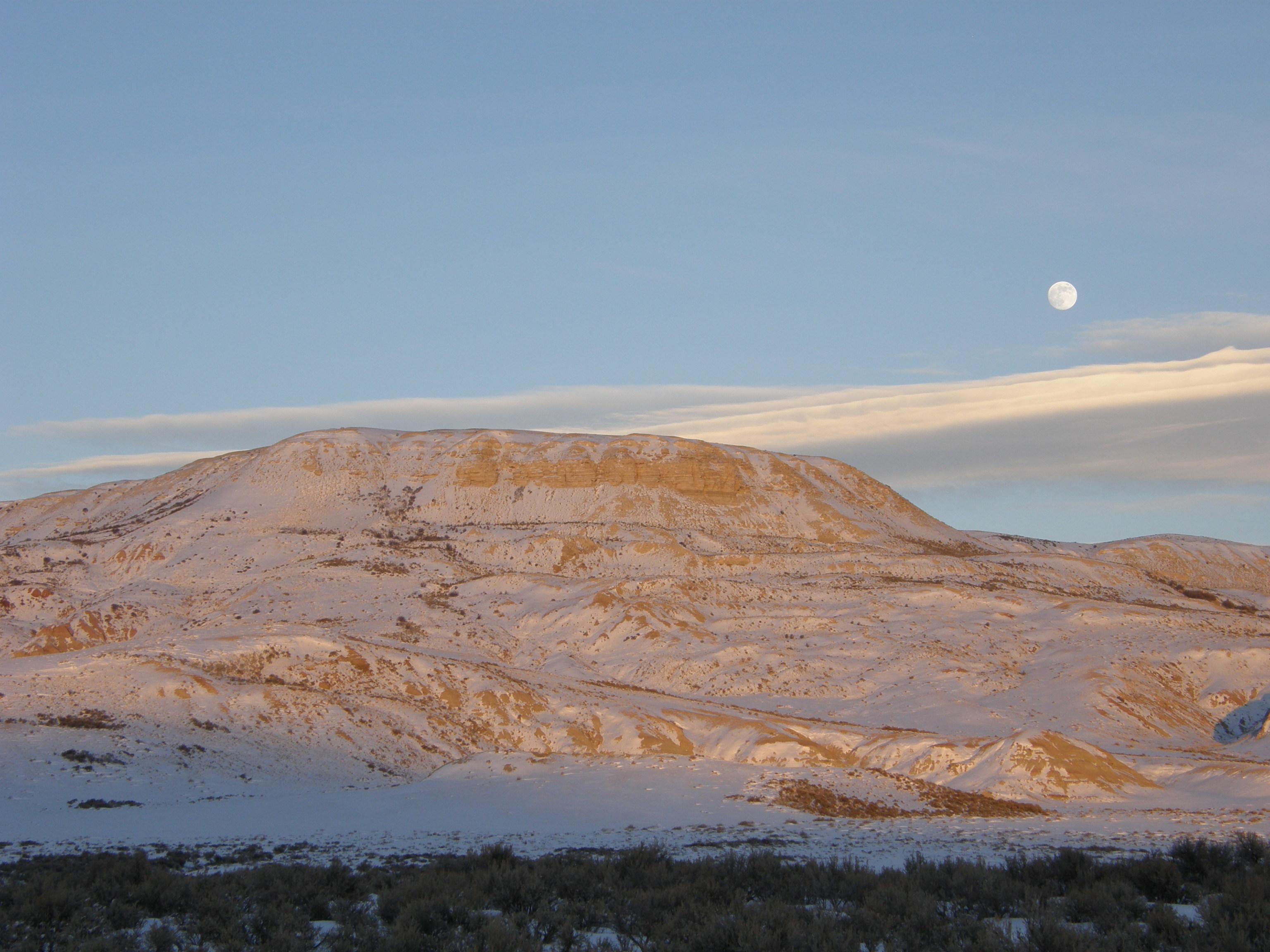
Fossil Butte is the most noticeable landmark of the park and where the monument got its name.